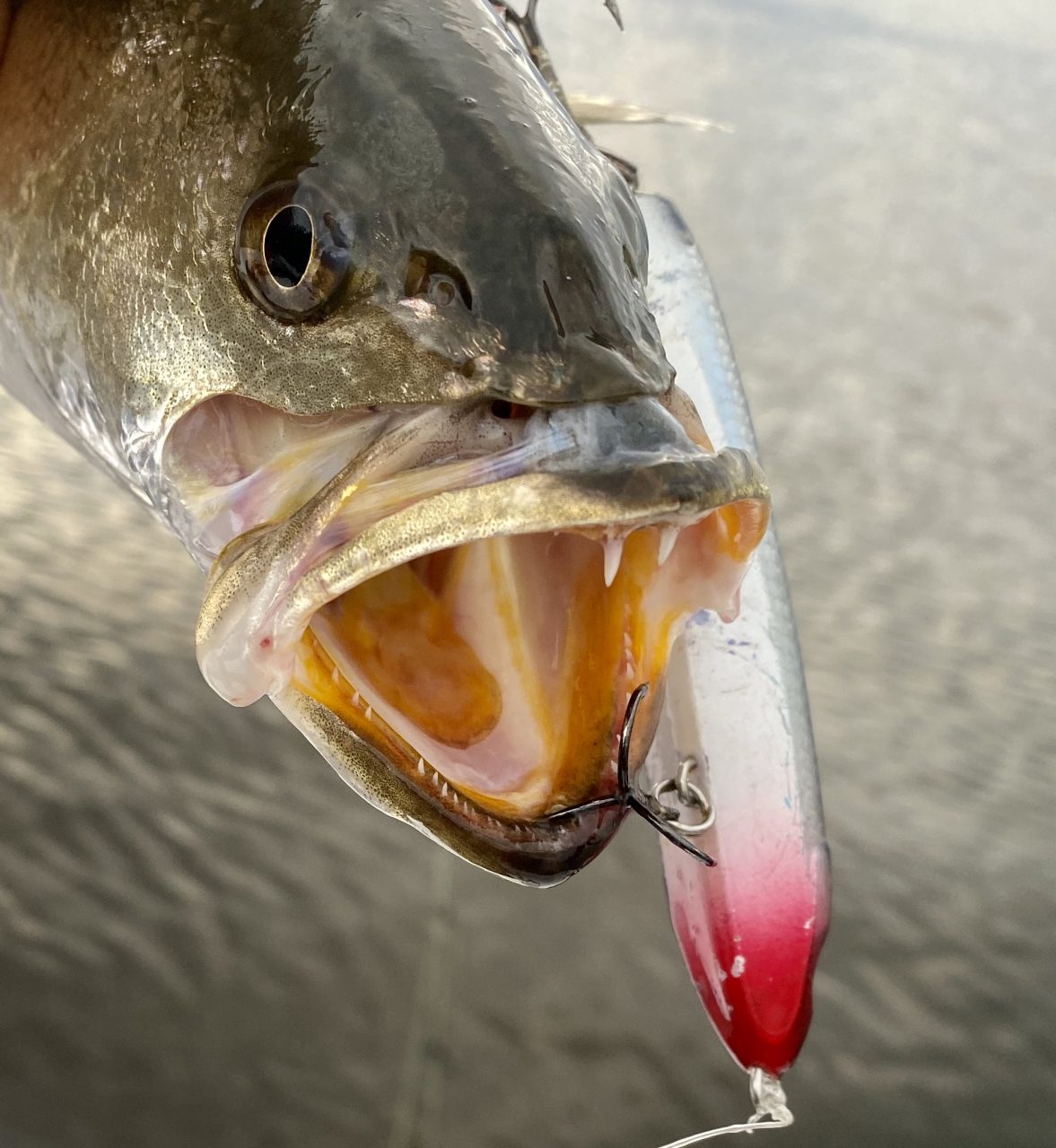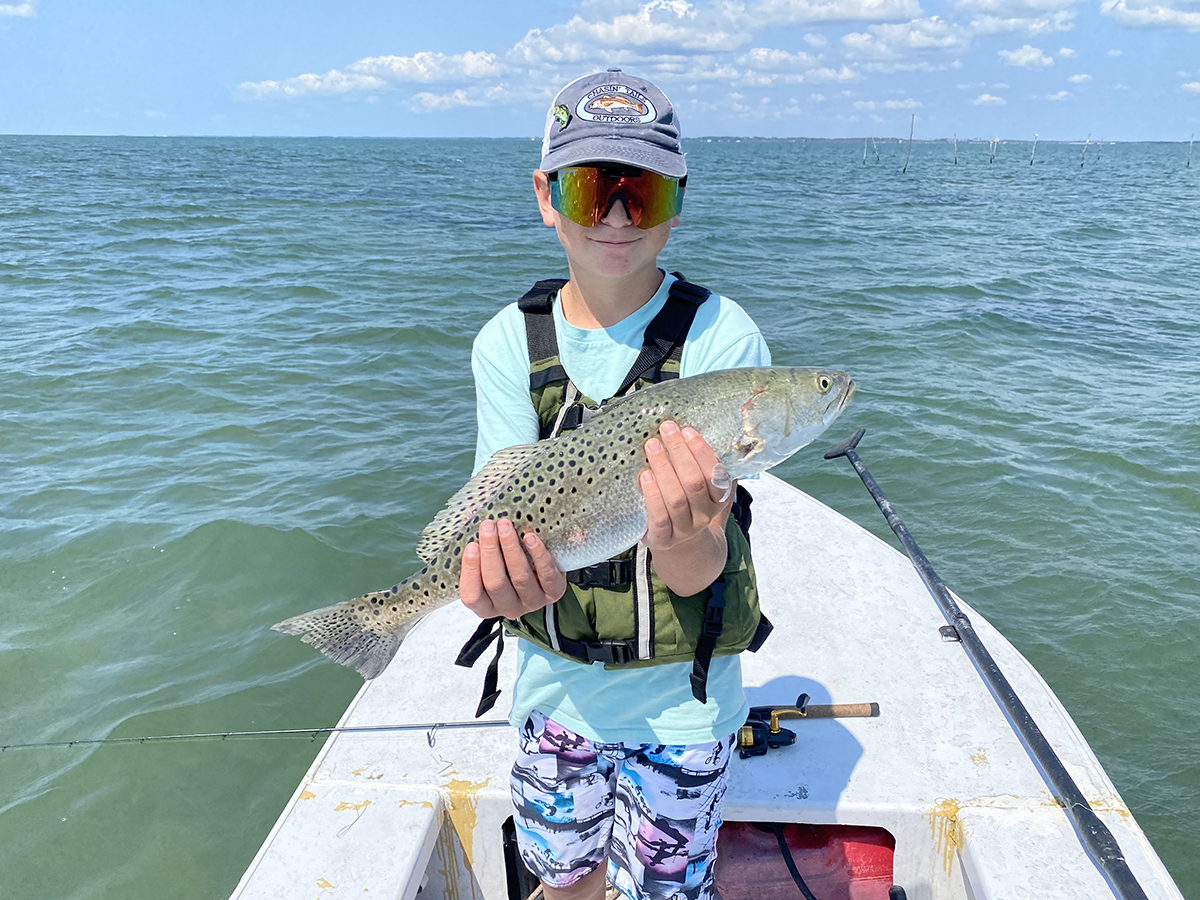
It was going to be 98 degrees by 11 a.m., but just after dawn the fish had been biting.
I set the alarm to go off at 4:45, be at the boat ramp before 5:30, and at the fishing spot by 6. This is what you sign up for when you want to flats fish in high summer.
Supporter Spotlight
There was a certain grass flat that I had been dying to try. It’s just off the Intracoastal Waterway, southwest of Morehead City, some small islands here and there, and plenty of mullet and smaller baitfish. I set up just offshore of one of the islands. My friend was visiting, and I told him to cast his topwater plug as far as he could in the general direction of the island. As I was putting the trolling motor down, he got a pretty 19-inch trout.
Catching a fish on the first cast is often the kiss of death. I was wondering if we would be jinxed when I got an 18-inch redfish on my second cast. This is how it went for the next hour or so. A couple lower slot reds, then a nice trout. Good action. At one point we got off the downwind side of a point and there was a school of 22-inch reds, and we took turns catching them for 45 minutes.
When the action died down, I had to detour around a spot that was too shallow. Just when we got to a slightly deeper area, it happened. The water exploded under his plug. The fish went crazy at the boat, thrashing like a nightmare. I grabbed the net and scooped it up. The 27-inch trout was the biggest one he had ever caught. He couldn’t believe a fish that big would be in water just barely deep enough to run a trolling motor on a shallow draft skiff. The big girl was released to start a new generation of trout with good genes. We traded high fives as she swam away and headed in at 11 after five good hours.
It was now “officially” hot and an air-conditioned place to sit down and have a chilled drink was the perfect remedy.
This is summer fishing inshore. Get out early to beat the heat. Throw topwater lures. Hopefully get into a few nice fish. Back in before lunch so you don’t broil.
Supporter Spotlight
Many people think that trout go dormant in summer. They only think that because they can’t catch them. They’re not in the creeks they used in spring, and they are not schooled up the way they will be in fall. But they are super aggressive. When you find some, the slow twitch pause retrieve that works when it’s cold, will often be ignored.
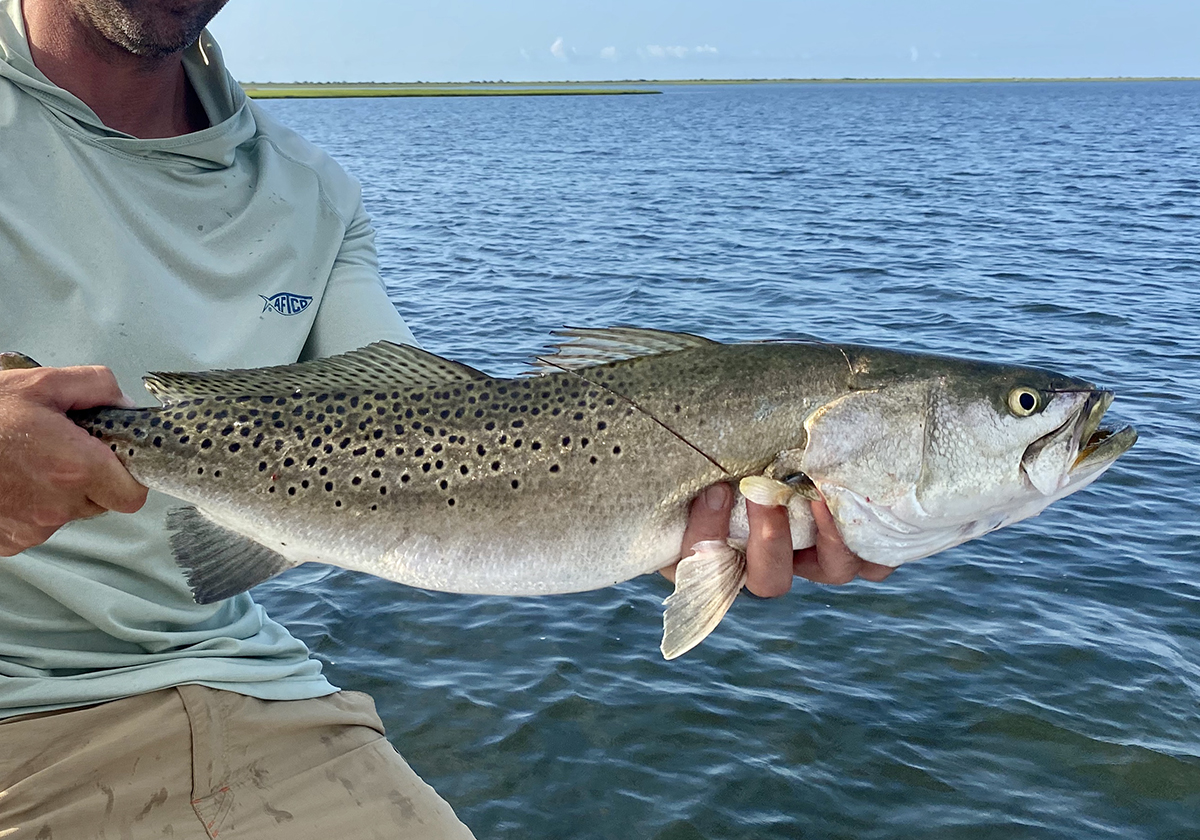
The trout of summer are spread out. They will eat big meals and will not hesitate to chase them. In fact, it seems they prefer fast-moving items and ignore slower offerings that don’t create any disturbance. These circumstances lead to trout and red drum slamming big topwaters all summer.
Everybody loves the excitement of topwater strikes. It’s great to see the fish come up and smash a lure on top. In summer it’s simply the best way to fish.
My favorite, and I think the most effective style to use to cover a lot of area in many fishing situations, are the dog-walking-style plugs made famous by the original Zara Spook. My favorites are the Rapala Skitterwalks. It takes a little bit of practice to make them work the way they are meant to, but once you get it down, it becomes second nature and fish can’t resist the wiggle.
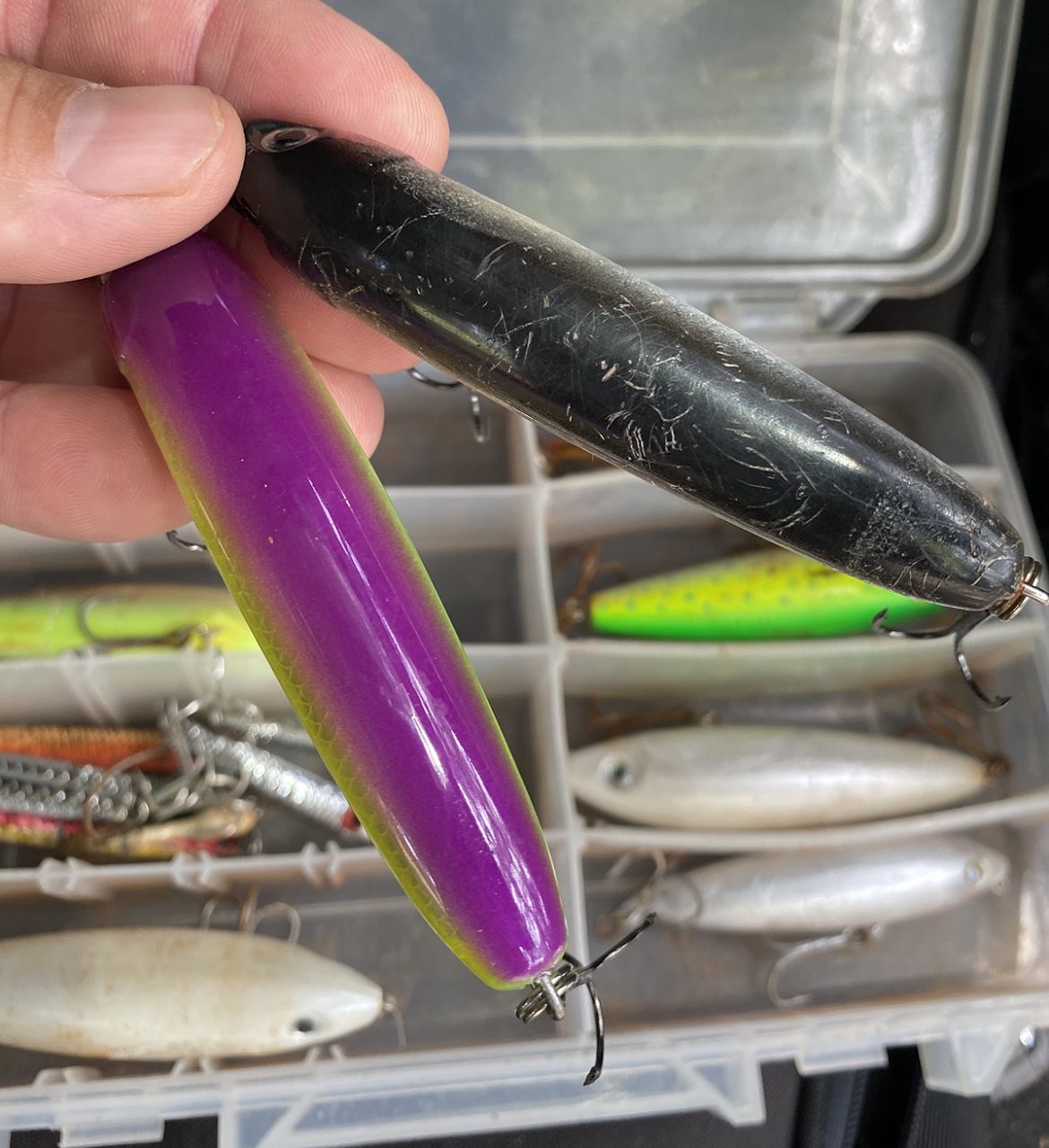
Pick a color you like that will show up nicely in the water you are fishing. If it’s clear, I like lighter colors. In stained water I’ll use something with a gold or copper finish. Cast it out there as far as you can, the longer it’s in the water, the more chance a fish will see it.
You’ll see your lure sitting on top at an angle to you. Twitch your rod tip downward. You will see your plug twitch and change direction. This is the action you want to repeat. Twitch it again. See what it does. It should change direction again. That side-to-side movement is what you want.
The key is to repeat it over and over in a cadence. We do this by leaving a slight bend in the line between twitches, this gives the plug room to change directions. If you try to do it with a tight line, it will just jump forward over and over. That will work for bluefish and jacks, but trout and reds won’t be impressed. Twitch, slack, twitch, etc. The whole time you should be reeling just fast enough to keep the line almost tight. Again, it’s the tiny bit of slack in the line that allows the lure to work.
The next key is hooking up. The strikes are incredibly exciting. Your first impulse will be to jerk the rod back in an attempt to set the hook. Usually, all you will accomplish is to take the lure right out of the mouth of your prize. Just keep reeling until the line comes tight. Sometimes they will strike at it and miss. If you jerk it away, they will lose track of it. If you just keep reeling, they can keep tracking it and possibly strike at it again.
When the line comes tight, then you reel faster to set the hook and then let the fish run. Don’t snap the rod tip up to set the hook, just turn the handle faster until the line comes tight. Otherwise, you risk getting smacked in the face with a treble-hooked missile.
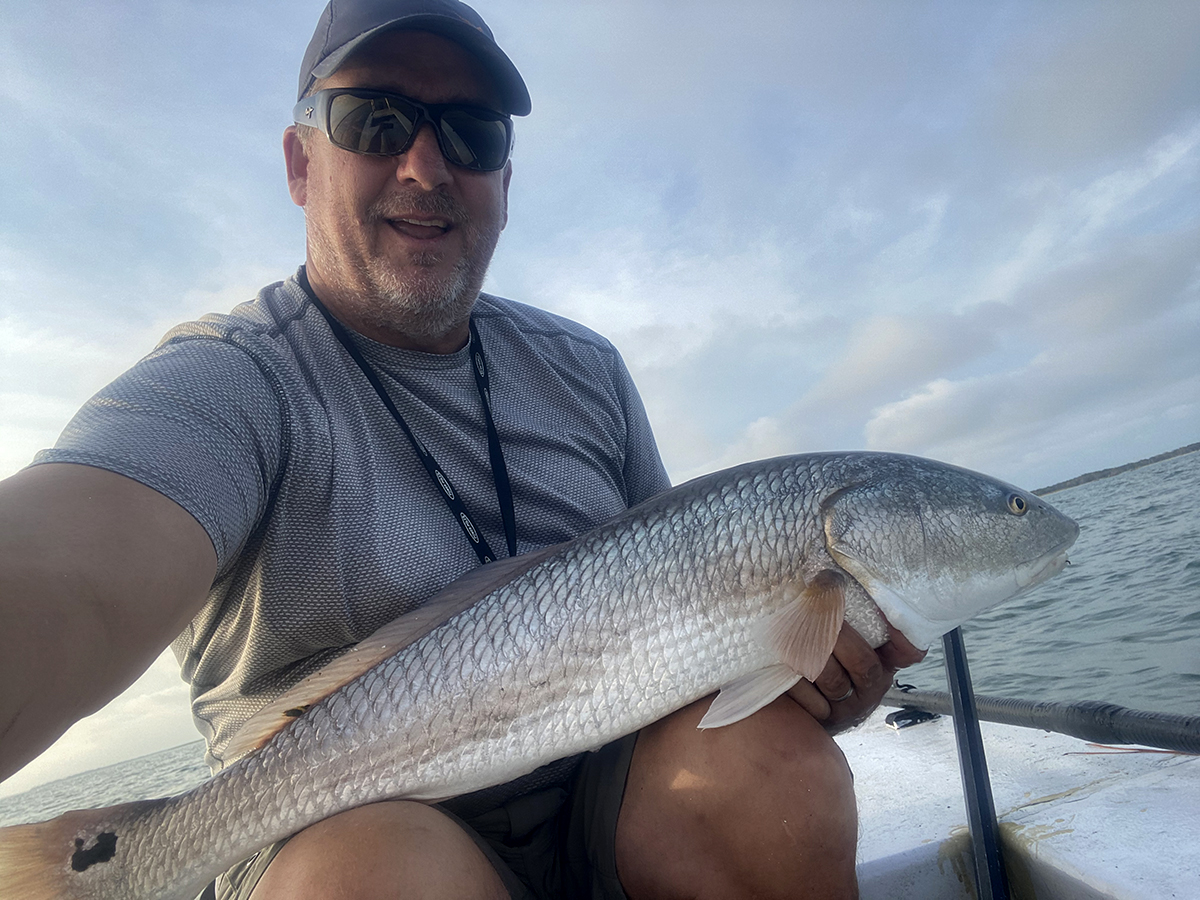
Tidal creeks in areas off the Atlantic Intracoastal Waterway from Beaufort to the South Carolina border are good places to look for red drum in summer. Any creeks with nice oyster bars are good places to start. If there are shrimp jumping around in there, all the better.
Summer trout and reds will also be found around grass flats that exist along spoil islands in the sounds from the Outer Banks to Southport, around flats and drop-offs in the New River and sandbars along the shoreline in the mouth of the Neuse River – but don’t fish in the restricted zones or you might get a visit from a U.S. Marine Corps helicopter.
Bonus catches will include the biggest bluefish you might catch around here, crevalle jacks that will try to pull you out of the boat, and ladyfish over 24 inches that will jump like a tarpon.
Get an early start. Make long casts. Make that topwater wiggle. Be ready. There’s usually no warning when they hit. Sometimes you will see a wake come up behind or from the side, but mostly they’ll just all of a sudden be on it. You could just catch the biggest speckled trout you’ve ever caught or a red drum over 30 inches.
